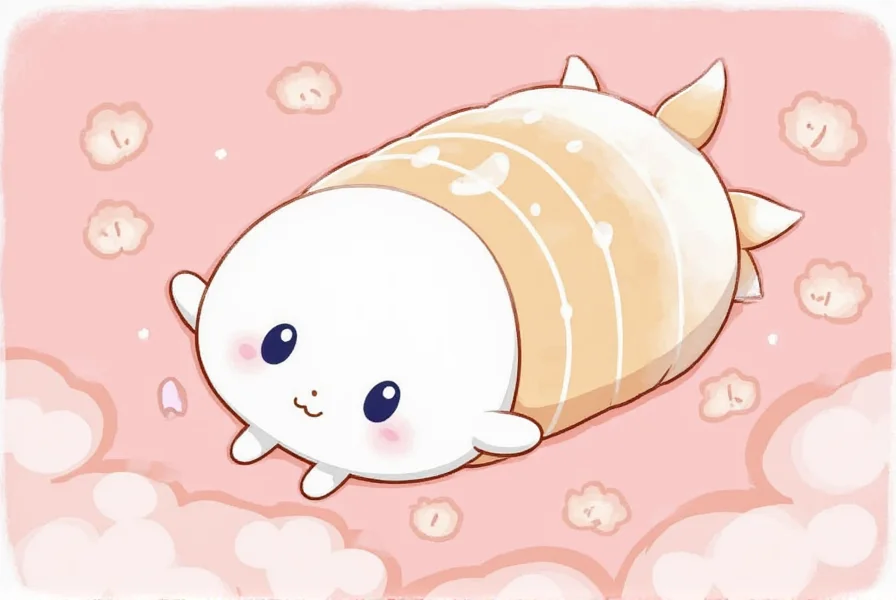When searching for \"cinnamon roll cartoon,\" most users are looking for information about Cinnamoroll, Sanrio's iconic character that perfectly blends cute animal features with pastry inspiration. Created by Japanese company Sanrio—the same studio behind Hello Kitty—Cinnamoroll has developed a dedicated international following since his debut.
Who Is Cinnamoroll?
Cinnamoroll, officially known as Cinnamon Roll, is a male puppy character born on March 6th who lives in a café called \\"Cafe Cinnamon.\\" His most distinctive features include fluffy white fur, sky-blue eyes, and ears that curl like cinnamon rolls—giving him his name. Unlike traditional cartoon characters, Cinnamoroll can fly using his ears as wings, a whimsical detail that enhances his magical appeal.
The Origin Story of the Cinnamon Roll Cartoon Character
Sanrio introduced Cinnamoroll in 2001 as part of their expanding universe of kawaii (cute) characters. The character was designed by Yuko Yamaguchi, who also worked on Hello Kitty. Cinnamoroll's creation came during Sanrio's strategic expansion beyond their flagship character, aiming to develop new personalities with unique visual hooks.
What makes this cinnamon roll cartoon character particularly interesting is how his design merges food aesthetics with animal characteristics—a trend that has become increasingly popular in Japanese character design. The cinnamon roll shape isn't just decorative; it's central to his identity and abilities within the character's lore.
Physical Characteristics and Personality
Cinnamoroll's design follows specific elements that contribute to his widespread appeal:
| Feature | Description | Significance |
|---|---|---|
| Ears | Cinnamon roll-shaped, spiral design | Enables flight and serves as primary visual identifier |
| Fur Color | Pure white | Represents purity and innocence in Japanese character design |
| Eyes | Sky blue | Creates visual contrast against white fur |
| Tail | Cinnamon roll spiral | Reinforces the pastry theme consistently |
Personality-wise, Cinnamoroll is portrayed as gentle, kind-hearted, and somewhat shy. His stories often revolve around helping others at the Cafe Cinnamon, where he works alongside other pastry-themed characters. This narrative approach gives depth to what might otherwise be a simple visual concept, transforming the cinnamon roll cartoon into a fully realized character with relatable traits.
Cultural Impact and Global Popularity
While initially popular in Japan, Cinnamoroll's appeal has grown internationally, particularly among fans of kawaii culture and Sanrio enthusiasts. The character's merchandise—including plush toys, stationery, and apparel—sells consistently well across Asia, North America, and Europe.
Unlike many food-themed cartoon characters that remain niche, Cinnamoroll has achieved mainstream recognition through:
- Multiple animated series and specials
- Regular appearances at Sanrio theme parks
- Collaborations with major brands
- Strong social media presence
The enduring popularity of this cinnamon roll anime character demonstrates how effectively Sanrio merged culinary aesthetics with character design—a formula that continues to resonate with audiences seeking comforting, whimsical imagery.
Why Cinnamon Roll Characters Appeal to Audiences
Food-themed cartoon characters like Cinnamoroll tap into universal positive associations:
- Comfort connection: Cinnamon rolls represent warmth, home baking, and comfort
- Visual appeal: The spiral shape creates dynamic, recognizable silhouettes
- Cultural bridge: Food transcends language barriers, making the character globally accessible
- Nostalgia factor: Connects to childhood memories of sweet treats
These elements combine to create what character designers call \"sensory appeal\"—where visual design triggers positive associations with other senses, particularly taste and smell. This multisensory connection makes the cinnamon roll cartoon character more memorable and emotionally resonant than purely visual designs.
Cinnamoroll in Media and Merchandise
Cinnamoroll has appeared in various media formats since his creation:
- \"Cinnamoroll: The Movie\" (2005)
- Multiple television specials
- Comic books and storybooks
- Video games featuring Sanrio characters
Merchandise ranges from basic plush toys to high-end collectibles. The character's consistent design language—maintaining the cinnamon roll motif across all products—has helped build strong brand recognition. For artists interested in drawing cinnamon roll cartoon characters, Sanrio's official style guides emphasize specific proportions and features that maintain character consistency.
How Cinnamoroll Compares to Other Food-Themed Characters
While many food-inspired cartoon characters exist, Cinnamoroll stands out for several reasons:
- Animal hybrid approach: Unlike characters that are purely food items (like Anpanman's bean paste head), Cinnamoroll is an animal with food-inspired features
- Functional design: The cinnamon roll elements serve a purpose (flight capability) rather than being purely decorative
- Consistent lore: Sanrio has developed an extensive backstory that integrates the pastry theme meaningfully
This thoughtful integration of food aesthetics into character functionality represents a more sophisticated approach than many other food-themed cartoon characters, contributing to Cinnamoroll's longevity in a crowded market.











 浙公网安备
33010002000092号
浙公网安备
33010002000092号 浙B2-20120091-4
浙B2-20120091-4